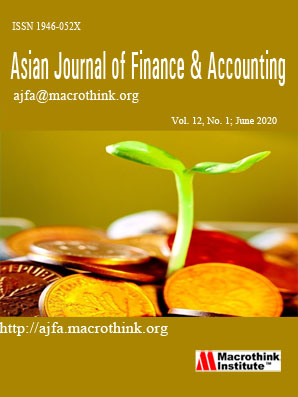The Impact of Information Asymmetry and Client Credit on Lending Performance - Taiwan’s Evidence
Abstract
Using panel data from Taiwan, this paper examines the impact of information asymmetry and client credit on lending performance. Banks without huge losses from bad debts and from credit card lending are categorized as high lending performance banks, whereas banks with heavy losses from bad debts and from credit card lending are categorized as low lending performance banks. Firms are also divided into micro and small businesses (MSBs) and medium and large businesses (MLBs). Logit regression is used to identify the determinants of lending performance, including the levels of information asymmetry and client credit records. The empirical results show that: (1) MLBs with good information transparency tend to establish relationships with banks that are characterized by huge losses from bad debts and from credit card lending. (2) Small foreign firms, as well as MLBs with high profitability, cash and R&D expenditure ratios prefer having relationships with banks with good lending performance and low credit risk. (3) MLBs and MSBs with poor credit records prefer having relationships with banks that have good lending performance and low credit risk.
Submission of an article implies that the work described has not been published previously (except in the form of an abstract or as part of a published lecture or academic thesis), that it is not under consideration for publication elsewhere, that its publication is approved by all authors and tacitly or explicitly by the responsible authorities where the work was carried out, and that, if accepted, will not be published elsewhere in the same form, in English or in any other language, without the written consent of the Publisher. The Editors reserve the right to edit or otherwise alter all contributions, but authors will receive proofs for approval before publication.
Copyrights for articles published in MTI journals are retained by the authors, with first publication rights granted to the journal. The journal/publisher is not responsible for subsequent uses of the work. It is the author's responsibility to bring an infringement action if so desired by the author.








